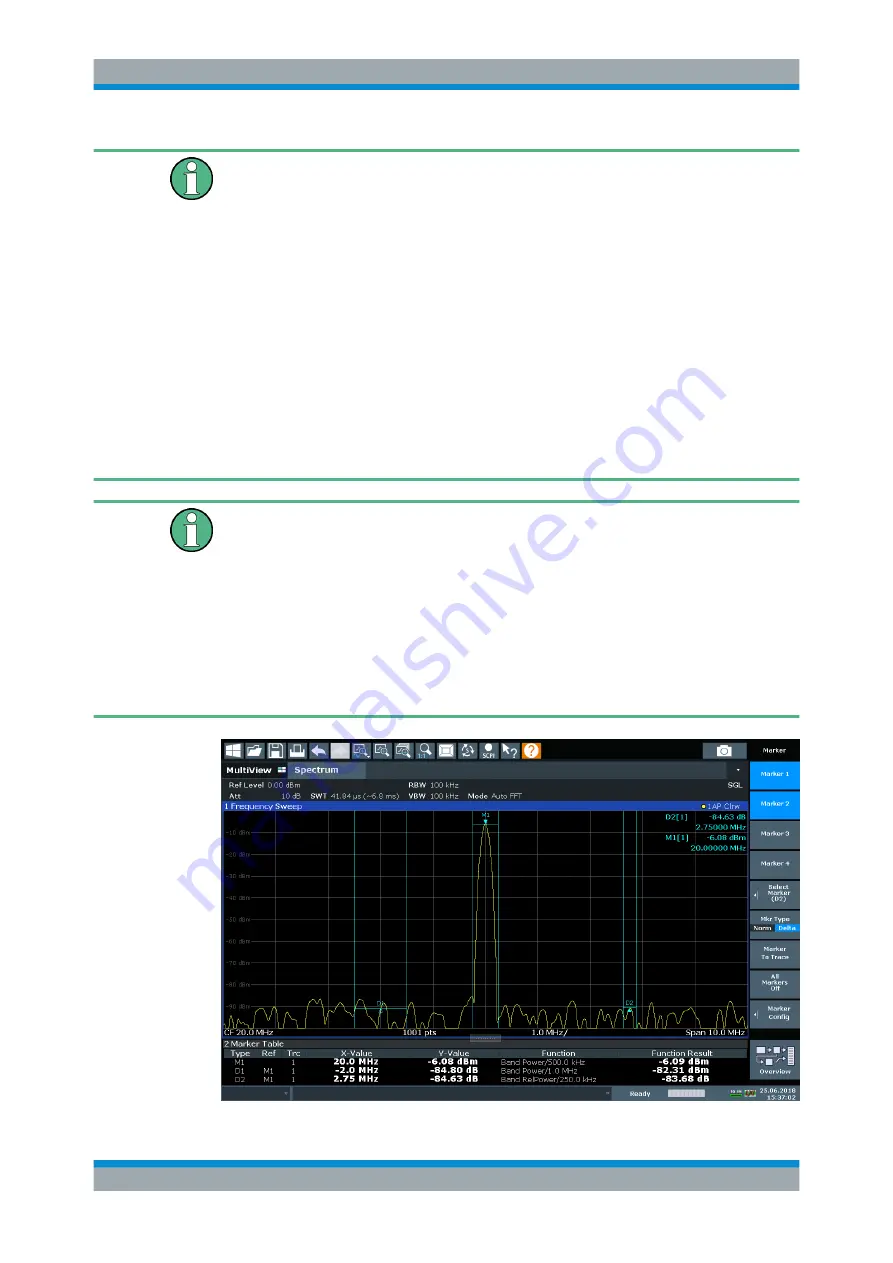
Common Analysis and Display Functions
R&S
®
FSVA3000/ R&S
®
FSV3000
454
User Manual 1178.8520.02 ─ 01
Relative band power markers
The results for band power markers which are defined as
delta
markers and thus have
a reference value can also be calculated as reference power values (in dB).
For analog demodulation measurements, relative band power markers are not availa-
ble.
In this case, the result of the band power deltamarker is the difference between the
absolute power in the band around the delta marker and the absolute power for the ref-
erence marker. The powers are subtracted logarithmically, so the result is a dB value.
[Relative band power (Delta2) in dB] = [absolute band power (Delta2) in dBm] - [abso-
lute (band) power of reference marker in dBm]
The measured power for the reference marker may be an absolute power at a single
point (if the reference marker is not a band power marker), or the power in a band (if
the reference marker is a band power marker itself).
If the reference marker for the band power marker is also a delta marker, the absolute
power level for the reference marker is used for calculation.
Band power markers are only available for standard frequency measurements (not
zero span) in the Spectrum and Analog Demodulation applications. In analog demodu-
lation measurements with AM, FM, or PM spectrum results, this marker function does
not determine a power value, but rather the deviation within the specified span.
For the I/Q Analyzer application, band power markers are only available for Spectrum
displays.
The entire band must lie within the display. If it is moved out of the display, the result
cannot be calculated (indicated by "-
-
-" as the "Function Result" ). However, the width
of the band is maintained so that the band power can be calculated again when it
returns to the display.
Marker Usage
















































